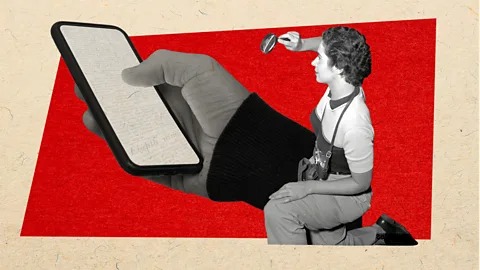The Dark Side of the Web – How Misinformation is Shaping Our Reality
The internet turned every phone into a broadcast tower. Anyone can write, record, or post without oversight. The speed is instant. The scale is global. But here’s the issue: bad information travels just as fast as good information—and sometimes faster.
And technology makes it worse.
Key Highlights
- Misinformation spreads faster and deeper than verified sources.
- Recommendation algorithms reward polarizing content.
- AI-generated articles create fake credibility at scale.
- Fake experts use digital tools to pose as real authorities.
- Echo chambers trap users inside biased perspectives.
- Staying aware of tech-driven manipulation is a digital survival skill.
Misinformation Moves Faster Than Truth

Social platforms are designed for engagement, not accuracy. When content goes viral, it rarely does so because it’s fact-checked. It spreads because it stirs emotion, triggers outrage, or confirms bias.
False claims don’t need proof. They just need reach. A single tweet with the right framing can outrank ten peer-reviewed studies in visibility. Studies from MIT confirm that fake news is 70% more likely to get retweeted than verified news.
Technology Enables Speed, Not Scrutiny
Modern tech infrastructure supports instant dissemination. But speed strips context. Messaging apps like WhatsApp or Telegram allow closed-group sharing, where misinformation circulates unchecked. Once shared enough times, lies start to feel like facts.
Algorithms Are Not on Your Side

Platforms like YouTube, TikTok, and Facebook push content that performs well. Performance means time spent, shares, and reactions—not quality or truth.
Algorithmic Amplification
- Controversial claims boost watch time.
- Polarizing posts drive more comments.
- Sensational headlines outperform nuanced ones.
AI-curated feeds often trap users in feedback loops. You see more of what you react to. If you interact with conspiracy theories once, you get more of them. This is not accidental. It’s baked into the system.
AI-Generated Content Adds a New Layer of Deception

AI tools can generate articles, scripts, reviews, and even fake conversations. Most readers can’t tell the difference between text written by a machine and one written by a human. And the ones generating false content know that.
Advanced detection tools are essential now. Tools like an AI content detector rely on DeepAnalyse Technology, a model designed to detect if content originated from AI models like GPT-3, GPT-4, Gemini, or LLaMa. Their detection framework evaluates text at multiple levels—from macro structure to micro-linguistic patterns.
For tech publishers, educators, and businesses, identifying manipulated content is no longer optional. It’s operationally critical.
Fake Experts Look Real Online
Credentials used to be gatekeepers. Now, anyone can add “Doctor,” “Analyst,” or “Researcher” to a profile. With the right branding, tone, and a few AI-generated whitepapers, a fake expert can build an audience of thousands.
The tech tools to do this are cheap and fast:
- AI-generated profile pictures
- Website templates with false citations
- Bot-driven follower growth
It’s not just annoying. It’s dangerous. These fake figures influence public health decisions, financial behavior, and even political outcomes.
Echo Chambers Tighten Grip on Users
Once inside an echo chamber, algorithms reinforce the bias. Opposing views disappear. Nuance vanishes. Every scroll confirms the same perspective, over and over.
Reddit, X (Twitter), and niche forums often become ideological silos. Subreddits or private channels tailor information toward a shared belief system. Arguments get filtered out. Dissent gets downvoted or banned.
The illusion? Consensus.
The reality? Isolation.
Deepfakes, Audio Cloning, and Synthetic Reality

Deepfake technology has evolved fast. It’s not just for faces anymore. AI now creates entire fake interviews, podcast episodes, or cloned voices.
Some startups even offer voice-as-a-service APIs. You upload a few minutes of speech, and the tool mimics you. Malicious actors use this to create fake voicemails, fake customer support calls, or scam investors with cloned voices of CEOs.
Synthetic media doesn’t just distort the truth—it erases the line between real and fake.
Search Engines Are Losing the Signal
Search engines like Google once helped filter quality. But now, SEO-optimized garbage floods the results. Many top-ranking posts come from content farms or AI tools trained to hit keywords, not deliver substance.
Clickbait, recycled articles, and misleading product reviews dominate page one.
Even experienced users get caught in the noise.
Tech Illiteracy Makes Users More Vulnerable
Most users don’t know how algorithms work. They don’t check the source. They don’t question the author. That leaves them open to manipulation.
The misinformation problem isn’t just about bad actors—it’s about unprepared users.
Tech literacy should be a basic requirement in 2025, but it’s still optional in most countries. Schools aren’t teaching it. Workplaces assume it. But without it, people can’t protect themselves.
How to Stay Safe in a Digital Maze

You won’t stop the flood of false information. But you can build better defenses. Every tech-savvy user should follow a basic protocol for validating digital content.
- Check the source.
Is the domain credible? Is the author real? Has the publisher been cited elsewhere? - Reverse search.
Use image and headline reverse searches. If it’s real, it’s been reported by more than one place. - Use AI detection tools.
Before you trust a suspicious blog or press release, run it through an AI content detector. Let the tech fight the tech. - Follow verified experts.
Academic institutions, certified professionals, or long-standing journalists—not someone who launched their blog last week. - Avoid emotional traps.
If it makes you angry or scared right away, pause. Manipulation starts with emotion.
Tech Built the Problem. Tech Can Help Solve It.
Misinformation didn’t appear out of nowhere. The tools we use every day—the platforms, the algorithms, the automation engines—accelerated the crisis.
- But those same tools offer hope.
- Detection models like DeepAnalyse.
- Browser plugins that flag manipulation.
- Trusted fact-checking APIs.
- Decentralized content verification protocols.
It’s not about returning to the past. It’s about improving the future of how we handle digital truth.
Final Word: Don’t Let the Web Lie to You
If you care about tech, if you use tech daily, if you build digital tools—then you have a responsibility to see through the noise.
Bad actors are getting smarter. So must you.
Keep your feed clean. Train your mind. Question everything. And when in doubt? Run the text through an AI content detector. Better safe than manipulated.





